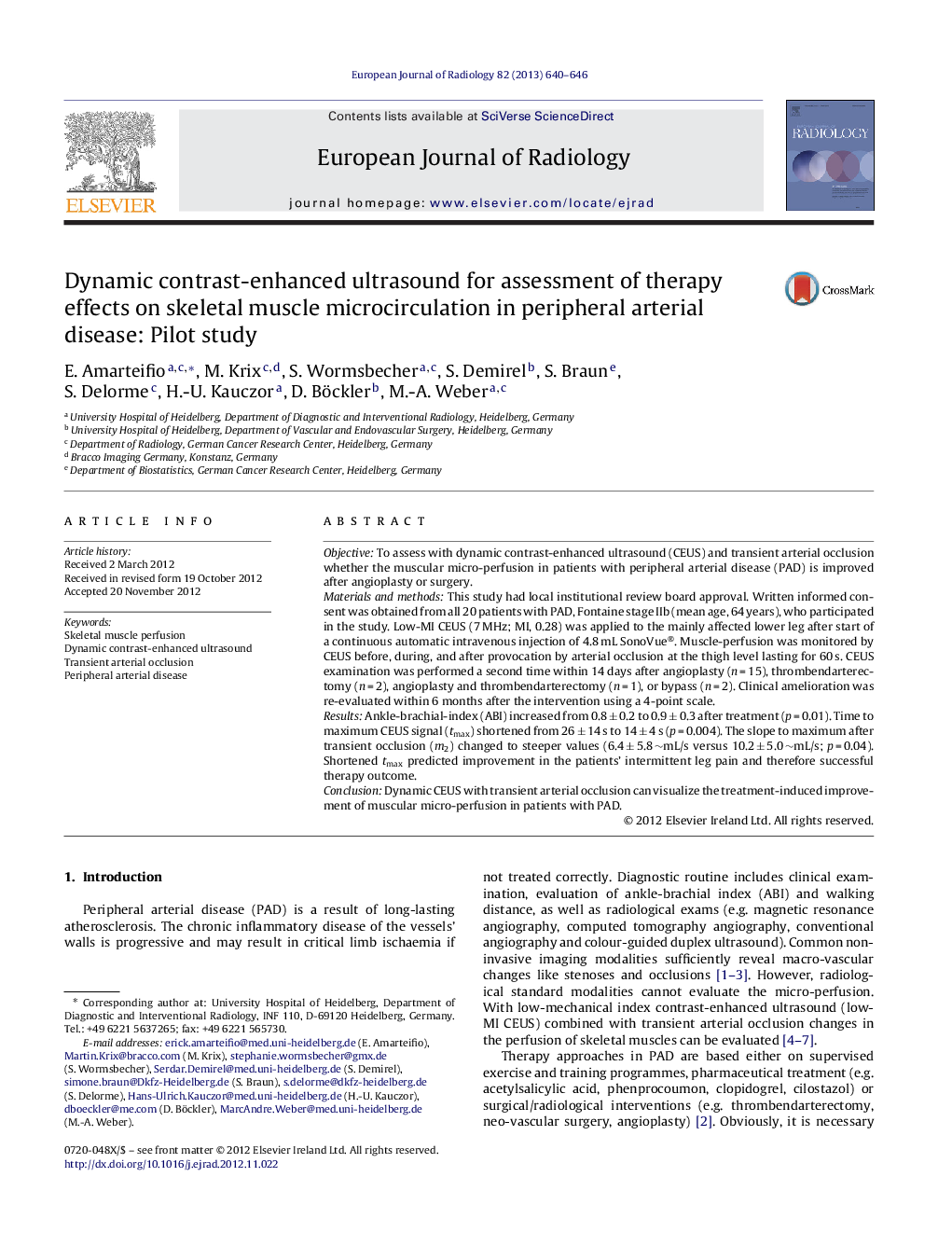| Article ID | Journal | Published Year | Pages | File Type |
|---|---|---|---|---|
| 4225918 | European Journal of Radiology | 2013 | 7 Pages |
ObjectiveTo assess with dynamic contrast-enhanced ultrasound (CEUS) and transient arterial occlusion whether the muscular micro-perfusion in patients with peripheral arterial disease (PAD) is improved after angioplasty or surgery.Materials and methodsThis study had local institutional review board approval. Written informed consent was obtained from all 20 patients with PAD, Fontaine stage IIb (mean age, 64 years), who participated in the study. Low-MI CEUS (7 MHz; MI, 0.28) was applied to the mainly affected lower leg after start of a continuous automatic intravenous injection of 4.8 mL SonoVue®. Muscle-perfusion was monitored by CEUS before, during, and after provocation by arterial occlusion at the thigh level lasting for 60 s. CEUS examination was performed a second time within 14 days after angioplasty (n = 15), thrombendarterectomy (n = 2), angioplasty and thrombendarterectomy (n = 1), or bypass (n = 2). Clinical amelioration was re-evaluated within 6 months after the intervention using a 4-point scale.ResultsAnkle-brachial-index (ABI) increased from 0.8 ± 0.2 to 0.9 ± 0.3 after treatment (p = 0.01). Time to maximum CEUS signal (tmax) shortened from 26 ± 14 s to 14 ± 4 s (p = 0.004). The slope to maximum after transient occlusion (m2) changed to steeper values (6.4 ± 5.8 ∼mL/s versus 10.2 ± 5.0 ∼mL/s; p = 0.04). Shortened tmax predicted improvement in the patients’ intermittent leg pain and therefore successful therapy outcome.ConclusionDynamic CEUS with transient arterial occlusion can visualize the treatment-induced improvement of muscular micro-perfusion in patients with PAD.
